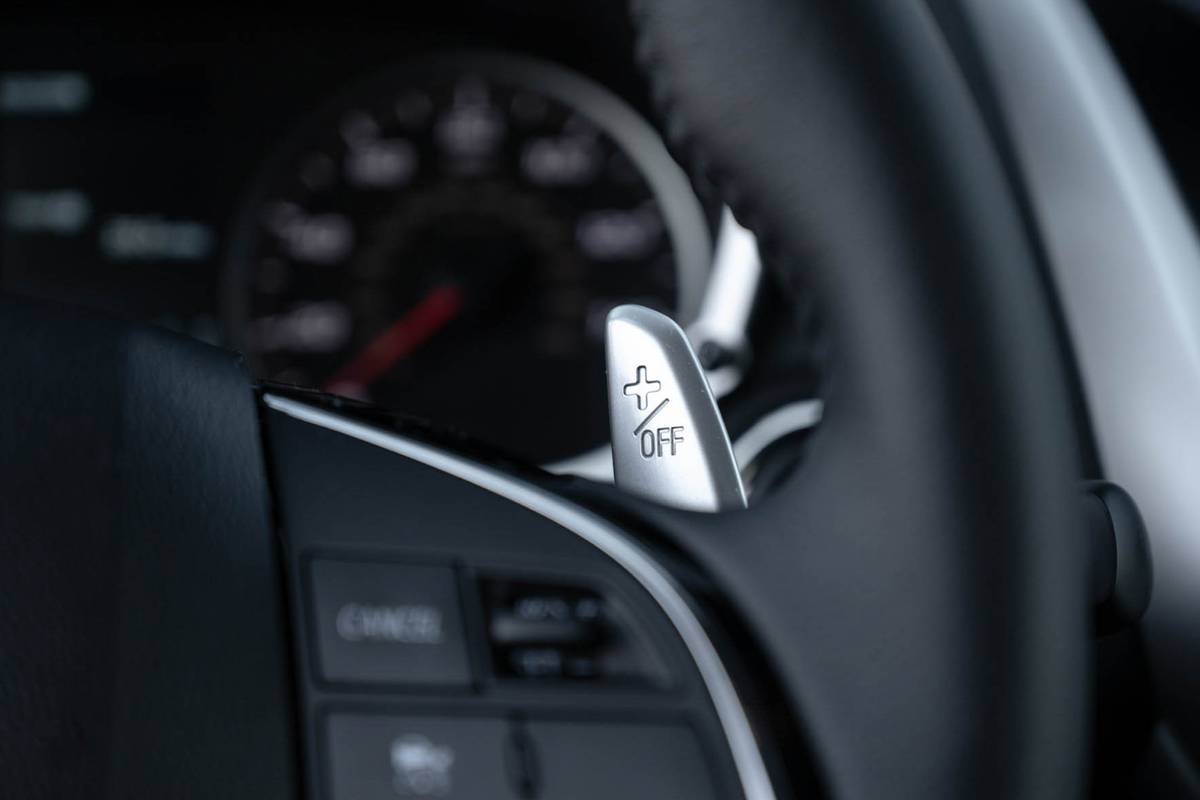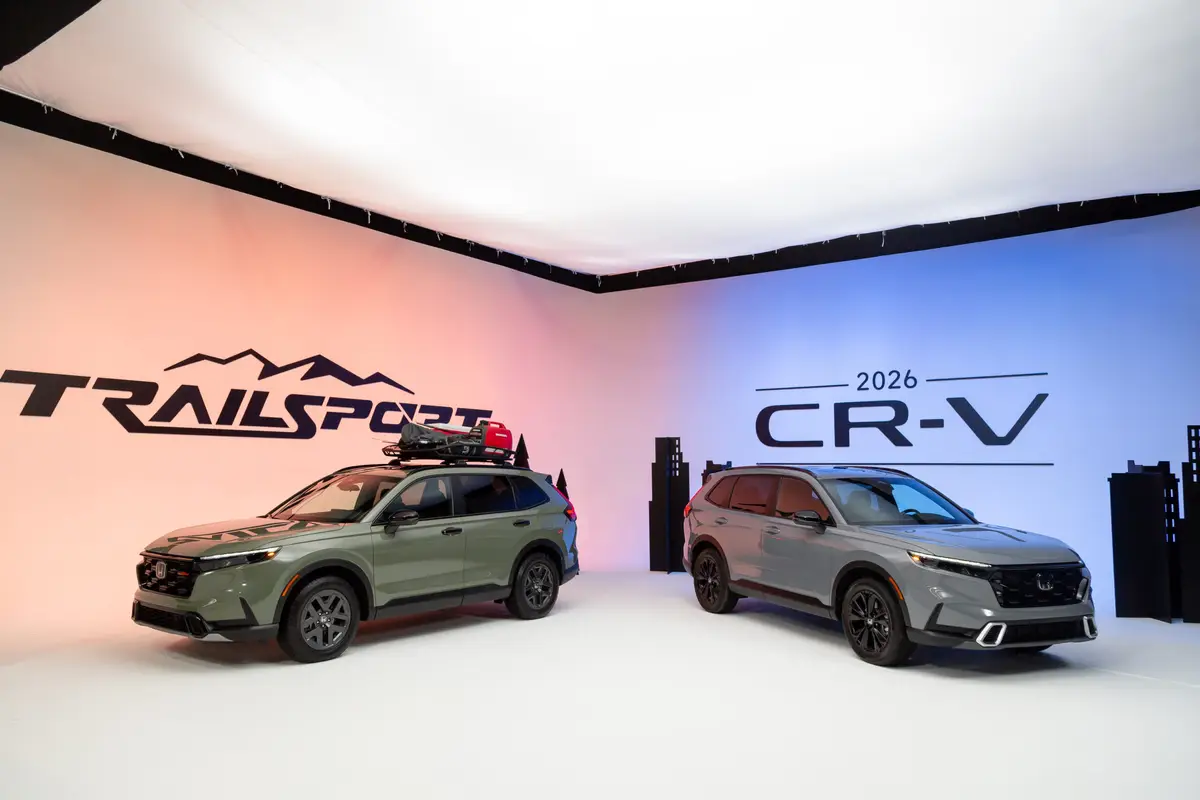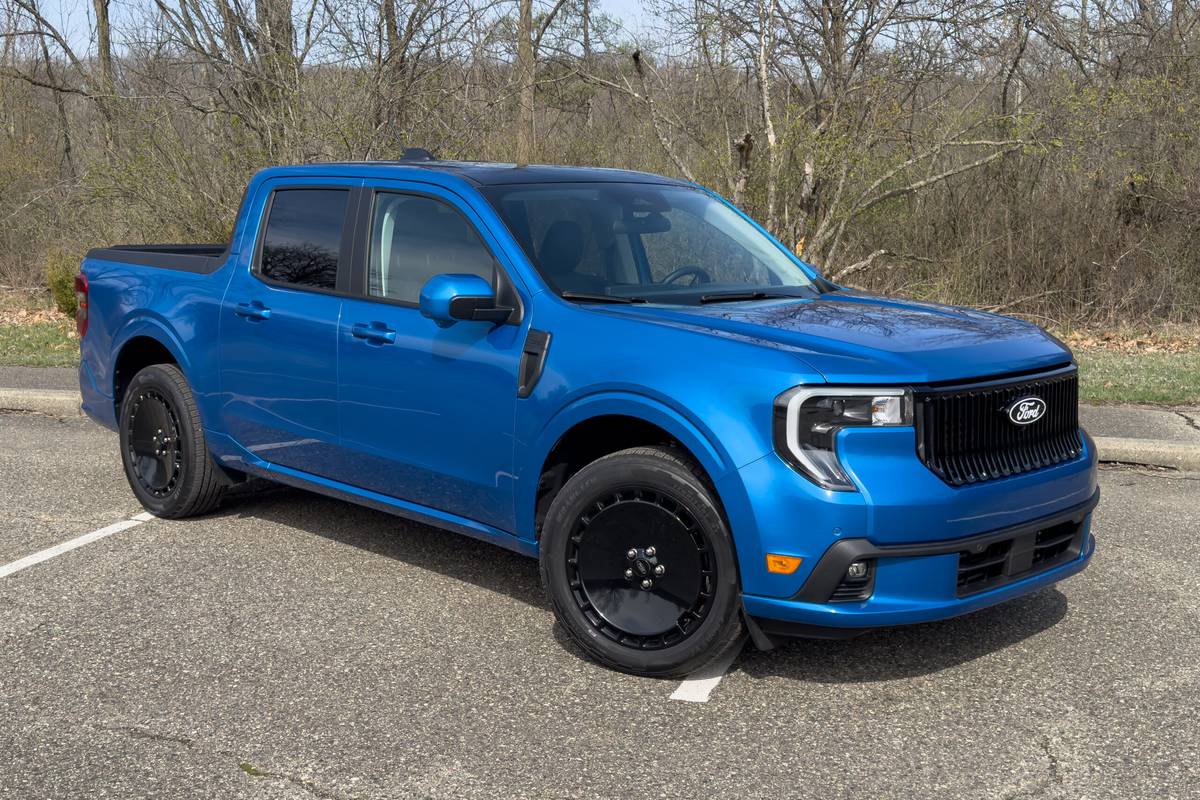What Are Paddle Shifters?

Paddle shifters are levers positioned behind one or both sides of a car’s steering wheel. They are usually attached to the back of the steering wheel and turn with the wheel, but on some cars, the paddles may be attached to the steering column and are thus stationary. Typically, paddle shifters allow drivers to manually change gears in a vehicle with an automatic transmission by pulling the levers in with their fingertips. However, in some electric vehicles, plug-in hybrids and regular hybrids, they are used to control the degree of regenerative braking or to also manually change gear ratios.
Related: What’s the ‘L’ in Your Shifter and When Should You Use It?
How Do You Use Paddle Shifters?
In most cases, pulling on the left paddle shifter prompts a downshift, while pulling on the right paddle forces an upshift — both one gear at a time (downshifting from 6th gear to 2nd gear, for instance, requires four pulls of the lever). In some cars, the paddles are active whenever the gearshift lever is in Drive, while in others, the shifter has to be moved from the Drive position into a manual mode before the paddles are active.
The car’s computer won’t execute a shift command if it determines that the shift would cause damage to the engine. For example, if you’re cruising down the highway in 6th gear at 70 mph and pull the paddle five times to drop down into 1st gear — which would over-rev the engine and possibly blow it up — the computer will ignore your command.
Why Would You Use Paddle Shifters?
Even if their vehicle has paddle shifters, many people never use them — and they probably don’t need to. Modern automatic transmissions are quite good at selecting the proper gear ratio for most situations without any driver interaction. However, there are times when choosing a different gear ratio than what the transmission is already in might be an advantage. These include:
- Hilly terrain. Going downhill, you might want a lower gear in order to increase engine braking (which causes the engine to spin faster and thus create more drag) in order to save your brakes. Similarly, you might want to preselect a lower gear to climb a hill; yes, the transmission will eventually downshift on its own, but manually changing gears ahead of time can make for smoother going.
- Accelerating on slick surfaces. Rather than starting off in 1st gear, which provides a lot of power to the drive wheels, you might want to start off in 2nd gear to reduce the amount of power and the chance of spinning the wheels.
- Entering a turn. Typically, you would only want to manually downshift when entering a turn if you’re really trying to hustle along (or just want to unleash your inner racecar driver), as you want a lower gear to provide more power when accelerating out of a corner and the transmission may delay in giving it to you.
- Passing. If you know you want to accelerate around another car, you can drop down a couple of gears in advance. This will provide more power more quickly than pressing the gas pedal and waiting for the transmission to kick down on its own.
More From Cars.com:
- Do Electric Vehicles Have Transmissions?
- Which Cars Have CVTs?
- Will Buying a Car With a Manual Transmission Save You Money?
- Thinking About Buying a Hybrid? Here Are Some Pros and Cons
- Find Your Next Car
What About the Paddles in EVs, Plug-in Hybrids and Regular Hybrids?
The electric motors used in an electrified vehicle (EV, plug-in hybrid or hybrid) can be turned into a generator that helps recharge the battery under deceleration and braking. Since it takes effort to turn a generator (and that effort comes from the car’s momentum), the car slows down even without hitting the brake pedal. This is known as regenerative braking, or “regen” for short.
Some vehicles give the driver the ability to adjust how strongly the regenerative braking system slows the car, as in a few cases, it’s able to slow the car faster than you normally would want to in traffic. Many systems can even slow the car to a complete stop without the driver ever having to touch the brake pedal, a feature known as one-pedal driving.
That ability to adjust the strength of the regen is often provided by the same type of steering-wheel paddle used to manually upshift and downshift an automatic transmission. Some hybrids may even use the paddles for both purposes; for instance, adjusting regen when in Eco mode or changing gears when in Sport mode. Sometimes, the degree of regen can also be set through the center touchscreen, with temporary exceptions being made with the paddles.
Whether gas-powered or electrified, if your car has paddle shifters — and you decide to use them — you should consult your owner’s manual to determine how they work as instructions vary.
Related Video:
Cars.com’s Editorial department is your source for automotive news and reviews. In line with Cars.com’s long-standing ethics policy, editors and reviewers don’t accept gifts or free trips from automakers. The Editorial department is independent of Cars.com’s advertising, sales and sponsored content departments.
Featured stories




